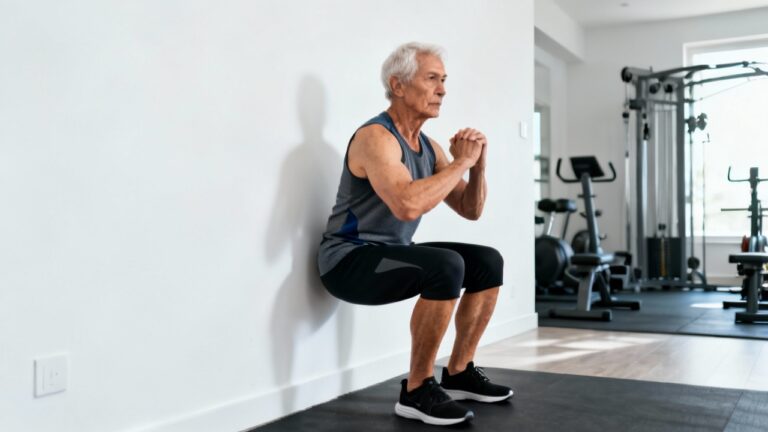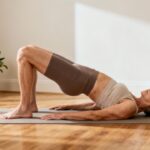If you’re over 50 and your knees ache every time you climb stairs, squat, or even stand up, you might believe it’s an unavoidable part of aging. But here’s a surprising truth: knee pain isn’t about your age—it’s about lost strength.
In this article, you’ll discover two simple yet highly effective exercises designed to rebuild your knee strength, reduce pain, and help you stay active and independent. Let’s dive in and take control of your knee health today.
Why Knee Pain Strikes After 50 and How to Fight Back
After age 50, adults naturally lose muscle mass, a condition known as sarcopenia. This decline affects your legs first, weakening the muscles that support your knees.
When your quads, glutes, and hamstrings aren’t strong enough, your knee joints bear the brunt of daily movements, leading to pain and stiffness.
But you can reverse this trend with targeted strength training that’s gentle on your joints.
Exercise 1: Isometric Lunge Hold for Knee Stability
Unlike traditional lunges that can strain your knees, the isometric lunge hold is a safe, joint-friendly move that builds strength without movement.
By holding a lunge position, you activate stabilizer muscles, improve mind-muscle connection, and strengthen the key areas around your knees.
Step-by-Step Guide to the Isometric Lunge Hold
Start by stepping one foot forward and the other back, keeping your feet hip-width apart. Gently bend both knees to lower into a lunge, but only go as deep as you can without pain.
Ensure your front knee stays behind your toes to protect the joint. Hold this position for 10–30 seconds, focusing on balanced pressure through your mid-foot.
Breathe deeply and engage your thigh muscles. Switch legs and repeat. If needed, use a chair or wall for support—good form is crucial.
The Science Behind This Move
Research shows that isometric exercises like this can significantly improve quad activation and reduce knee pain in adults over 50.
A 2022 study found that just three weeks of practice led to better knee stability and less discomfort, making it a powerful tool for reclaiming your mobility.
Exercise 2: Wall Sit with Variations for Total Leg Strength
The wall sit is a low-impact exercise that targets your quads, glutes, and hamstrings without stressing your knees. It’s perfect for building endurance and joint control, and with a few tweaks, you can amplify its benefits.
How to Do the Standard Wall Sit Correctly
Stand with your back flat against a wall and walk your feet about 18–24 inches forward. Slowly slide down until your thighs are parallel to the floor (or as low as comfortable), keeping your knees above your ankles.
Hold for 20–60 seconds, engage your core, and breathe steadily. Rest for 30–60 seconds between sets.
Boost Your Results with These Variations
For added glute and hip stability, try the wall sit with a resistance band placed above your knees—gently press outward against the band while holding the position.
To activate your inner thighs, squeeze a yoga block or towel between your knees during the wall sit. These variations enhance knee tracking and balance, reducing injury risk.
Smart Recovery and Nutrition for Lasting Knee Health
After exercising, prioritize recovery to let your muscles rebuild. Ice your knees if they feel sore, and incorporate light activities like walking on rest days.
Nutrition plays a key role too: aim for 20–30 grams of protein per meal to support muscle repair, and include collagen, omega-3s, and vitamins D and C in your diet to reduce inflammation and strengthen bones and cartilage.
Stay hydrated—your joints need plenty of water to stay lubricated.
Take the First Step Toward Pain-Free Knees
You don’t have to accept knee pain as a normal part of aging. By incorporating these two exercises into your routine and focusing on recovery and nutrition, you can build stronger, more resilient knees. Remember, consistency is key—start slowly, listen to your body, and celebrate every small victory. Your journey to pain-free movement begins now.








